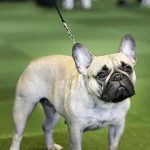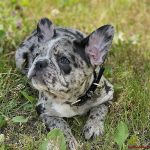Are English Bulldogs and French Bulldogs the same?
Choosing the perfect bulldog breed can be a tough decision for dog lovers and potential pet parents. With so many breeds to choose from, it’s important to understand the similarities and differences between them. In this captivating blog post, we’ll dive into the world of bulldogs and compare two beloved breeds: English Bulldogs and French Bulldogs.
Although they share a common ancestry, English Bulldogs and French Bulldogs have distinct traits, temperaments, and appearances. While they both belong to the bulldog family, their origins, physical characteristics, and overall temperament set them apart in unique ways.
Let’s start with some similarities. Both English Bulldogs and French Bulldogs descended from ancient Molossian dogs from Asia. They have that iconic stout and muscular body shape that we all love, along with a friendly and affectionate disposition. These dogs crave human attention and thrive in social environments – perfect companions for those seeking constant loyal companionship.
But there’s one notable difference – size. English Bulldogs are larger, weighing between 40-50 pounds, while French Bulldogs are smaller, typically weighing around 16-28 pounds. This size variance is important for those with limited living space or who prefer a more manageable-sized dog.
Another distinctive difference lies in their facial features. English Bulldogs have that adorable underbite that sets them apart, while French Bulldogs don’t have it. Additionally, English Bulldogs have a squarer head shape compared to the more rounded yet defined skull structure of French Bulldogs. These unique facial features contribute to their individual charm – you can spot them instantly.

Moreover, their temperaments vary too. Both breeds are known for being friendly and affectionate, but English Bulldogs have a laid-back and calm demeanor. On the other hand, French Bulldogs are livelier, energetic, and highly intelligent – perfect for families with an active lifestyle.
In conclusion, although English Bulldogs and French Bulldogs share common origins and alluring qualities, there are key differences that set them apart. Whether you prefer a larger, stoic companion or a smaller, energetic sidekick, understanding these distinctions will help you make an informed decision about the perfect bulldog breed for your home and lifestyle.

Stay tuned for our next blog posts, where we’ll explore their specific characteristics in more detail.
A Comparison of Appearance between English and French Bulldogs
Contents
- 1 A Comparison of Appearance between English and French Bulldogs
- 2 Coat Differences between English and French Bulldogs
- 3 Temperament Contrasts between English and French Bulldogs
- 4 Exercise Needs for English and French Bulldogs
- 5 Health Issues Common to Both Breeds of Bulldog
- 6 Popularity of English and French Bulldogs
- 7 Price Considerations for Buying an English or French Bulldog
- 8 History and Origin of the English Bulldog Breed
- 9 Conclusion
When it comes to comparing the physical characteristics of English Bulldogs and French Bulldogs, there are several notable differences that set these two popular breeds apart. As an expert in the field, I will provide you with an in-depth analysis that showcases the unique features of each breed.
Size and Build:
English Bulldogs are typically larger and heavier than French Bulldogs. With a stocky and robust appearance, they have a broad chest and a thick neck that exudes strength and power. French Bulldogs, on the other hand, are smaller and more lightweight, giving them a more compact and agile physique.
Head Shape:
One of the key distinguishing features between English Bulldogs and French Bulldogs is their head shape. English Bulldogs have a square-shaped head with pronounced wrinkles and a prominent jaw, which adds to their signature bulldog look. In contrast, French Bulldogs have a round-shaped head with less pronounced wrinkles and a shorter muzzle, giving them a more expressive and charming appearance.
Ears:

The ears of these two breeds also differ in shape. English Bulldogs have ears that are set high on the head and can be either rose-shaped or button-shaped, adding to their distinctive look. On the other hand, French Bulldogs have bat-like ears that are wide at the base and rounded at the top, giving them an adorable and unique feature.
Facial Expressions:
If you’re looking for a breed with a serious and stern expression, then the English Bulldog might be your match. With their wrinkled face and intense gaze, they often give off an air of authority. On the contrary, French Bulldogs are known for their comical and friendly expressions, with their round eyes and expressive features melting hearts wherever they go.
Coat Colors:
Both English Bulldogs and French Bulldogs have short coats that require minimal grooming. However, there can be variations in coat colors and patterns. English Bulldogs come in various colors such as brindle, fawn, white, or a combination of these, allowing for a wide range of choices. French Bulldogs also come in a variety of colors including brindle, fawn, pied, or solid black, giving them a striking and diverse appearance.
Tail:
The tail is another distinguishing feature between these two breeds. English Bulldogs have a straight or screwed tail that is set low and hangs down, adding to their overall muscular and robust appearance. On the other hand, French Bulldogs have a naturally short and thick tail that is either straight or slightly curved, giving them a cute and compact look.
Coat Differences between English and French Bulldogs
If you’re a proud owner of a French Bulldog, or if you’re considering getting one, it’s essential to understand the differences in coat characteristics between French Bulldogs and their English Bulldog cousins. While both breeds have short coats, there are notable distinctions that can impact their grooming needs.
Texture and Thickness:
English Bulldogs have a softer and finer coat, perfect for petting and cuddling. On the other hand, French Bulldogs boast a slightly coarser and thicker coat. So, if you’re looking for a velvety touch, the English Bulldog might be your go-to breed.
Color Variety:
When it comes to color options, French Bulldogs take the trophy. While English Bulldogs come in brindle, fawn, white, and pied variations, French Bulldogs offer a wider range of coat colors, including brindle, fawn, cream, black, and various pied patterns. It’s like having an artist’s palette right in your lap.
Wrinkles:
One distinctive feature of English Bulldogs is their adorable wrinkled face. These wrinkles not only add character but also require extra attention. Regular cleaning is crucial to prevent infections or irritations. On the other hand, French Bulldogs have fewer wrinkles or less pronounced ones, making them a bit easier to maintain.
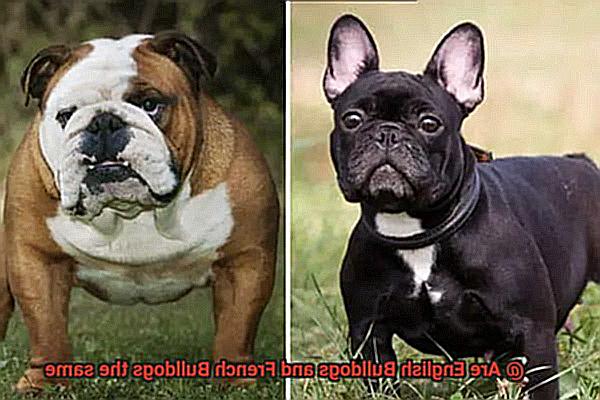
Shedding:
Both breeds shed moderately but in different amounts. English Bulldogs tend to shed more compared to their French counterparts. Don’t worry; regular brushing can help manage shedding in both breeds.
Grooming Needs:
English Bulldogs require more grooming due to their wrinkles. Cleaning these wrinkles regularly is essential for their overall health and well-being. On the flip side, French Bulldogs require regular grooming as well, though not as intensive as English Bulldogs.
Climate Adaptability:
Frenchies take the cake when it comes to handling heat. Their shorter coats and smaller size make them more adaptable to warmer environments. English Bulldogs, with their thicker coats and larger bodies, may struggle in hot weather and require extra care.
Remember, both breeds are prone to certain skin conditions due to their short coats. Regular veterinary check-ups and proper care are vital in preventing or managing allergies, dermatitis, and dry skin.
So, when choosing between an English Bulldog and a French Bulldog, consider your lifestyle, climate, and grooming preferences. English Bulldogs may require more grooming and attention to their wrinkles, while French Bulldogs may be more adaptable to different climates.
Temperament Contrasts between English and French Bulldogs
If you’re considering adding a Bulldog to your family, it’s important to understand the temperament differences between English Bulldogs and French Bulldogs. While they may look similar, these two breeds have distinct personalities that can greatly impact your daily life and interactions with them. As an expert on this topic, I’ve had the pleasure of experiencing firsthand the contrasting temperaments of English and French Bulldogs. So, let’s dive in and explore these differences.
Calm and Gentle vs. Playful and Energetic
English Bulldogs are known for their calm and gentle nature. They are easygoing, laid-back dogs that enjoy the company of their owners. Affectionate and loyal, they make great family pets. On the other hand, French Bulldogs are more playful and energetic. They love to entertain their owners with their clownish behavior and thrive on human companionship. They are highly sociable dogs who enjoy being the center of attention.
Reserved vs. Friendly towards Strangers
English Bulldogs tend to be reserved and may take some time to warm up to strangers. They can be protective of their families and make good watchdogs. However, they are not aggressive by nature and are usually friendly towards other animals. In contrast, French Bulldogs are generally friendly towards strangers and get along well with other animals. Their sociable nature makes them great companions in various social settings.
Stubbornness in Training
Both English Bulldogs and French Bulldogs have a stubborn streak, but English Bulldogs may be a bit more challenging to train due to their strong will. Consistent and patient training methods are necessary to overcome their stubbornness. Once they understand what is expected of them, English Bulldogs are generally obedient and eager to please. On the other hand, French Bulldogs are intelligent dogs who respond well to positive reinforcement techniques. They may lose interest quickly if training sessions become repetitive or boring.
Snoring and Respiratory Issues
One thing that both English Bulldogs and French Bulldogs have in common is their tendency to snore. Their short snouts and brachycephalic features contribute to this. However, French Bulldogs are more prone to respiratory issues compared to English Bulldogs. Their flat faces can lead to breathing difficulties, especially in hot weather or during physical exertion. Extra care should be taken to prevent overheating and ensure their well-being.
Exercise Needs
When it comes to exercise, English Bulldogs require moderate activity, such as daily walks, but should not be overexerted due to their brachycephalic nature. French Bulldogs, on the other hand, have higher energy levels and enjoy playtime and short bursts of activity. However, they should also be monitored in hot weather to prevent overheating.
Exercise Needs for English and French Bulldogs
When it comes to exercise needs, English Bulldogs and French Bulldogs have some similarities but also a few differences due to their brachycephalic nature. Here’s what you need to know to keep your furry friend happy and healthy:
- Brachycephalic Breeds: Both English Bulldogs and French Bulldogs have short snouts, which can make breathing more challenging during exercise. It’s crucial to be mindful of their limitations and avoid overexertion. Keep an eye on their breathing and take breaks if needed.
- Energy Levels: English Bulldogs are known for being more laid-back and having lower energy levels. They often prefer shorter, less intense exercise sessions. On the other hand, French Bulldogs are playful and energetic, requiring more exercise to burn off their energy.
- Obesity Prevention: Both breeds are prone to obesity, so regular exercise is essential to maintain a healthy weight. Obesity can lead to various health issues, such as joint problems and respiratory difficulties.
- Hot Weather Considerations: Due to their brachycephalic nature, English and French Bulldogs are more susceptible to heat stroke and respiratory distress. It’s best to avoid exercising them during hot weather or in extreme temperatures. Instead, opt for indoor activities or early morning/late evening walks when it’s cooler.
- Moderate Exercise: Engage in activities like walks, playtime, and mental stimulation that provide moderate exercise for your bulldog. Be sure to monitor their breathing and avoid pushing them too hard. Remember, they might not have the same endurance as other breeds.
- Swimming: Swimming is an excellent low-impact exercise option for English and French Bulldogs. It helps build muscle strength without putting excessive strain on their joints. If your bulldog enjoys the water, consider taking them for a swim.
- Interactive Games: Engaging your bulldog in interactive games like fetch or puzzle toys not only provides physical activity but also mental stimulation. These games can keep them entertained and help burn off excess energy.
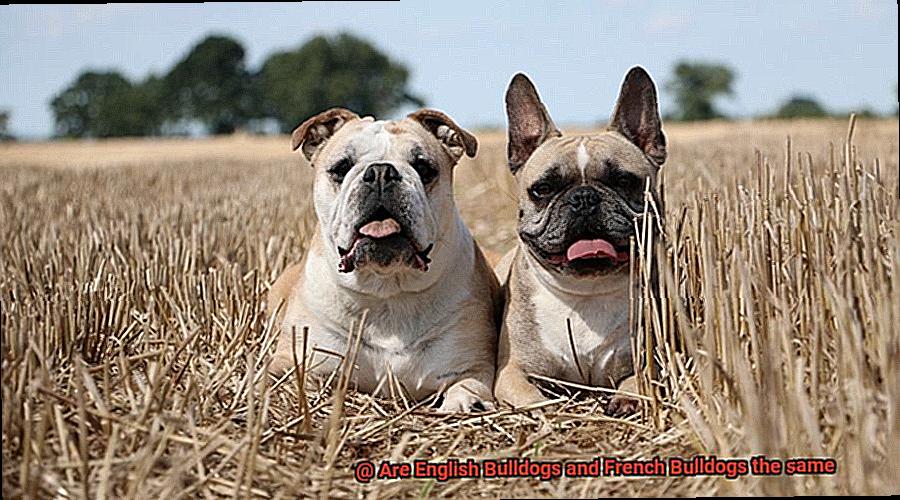
Remember, every bulldog is unique, so it’s essential to consult with a veterinarian or professional dog trainer to create an exercise regimen tailored to your pet’s individual needs. They can consider factors such as age, health condition, and specific requirements to ensure your bulldog stays fit and healthy.
Health Issues Common to Both Breeds of Bulldog
Both English Bulldogs and French Bulldogs are prone to certain health issues due to their unique physical characteristics. These issues can range from minor problems to more serious conditions that require medical intervention. It’s important for owners of both breeds to be aware of these common health concerns and take proactive measures to ensure the well-being of their furry friends.
Brachycephalic Airway Syndrome:
- Symptoms include difficulty breathing, snoring, and excessive panting.
- Bulldogs’ flat facial structure can lead to narrowed airways, making it harder for them to breathe properly.
- Regular exercise and avoiding strenuous activities in hot weather can help alleviate symptoms.
Skin Problems:
- Bulldogs have folds of skin that can trap moisture and bacteria, leading to infections or irritations.
- Regular cleaning and proper grooming can help prevent skin problems such as dermatitis, eczema, or allergies.
Joint Issues:
- Bulldogs are prone to hip dysplasia and patellar luxation.
- Their stocky build with short legs puts added stress on their joints.
- Regular exercise that is low-impact can help maintain joint health.
Eye Problems:
- Bulldogs often have protruding eyes, making them more susceptible to cherry eye (inflamed gland).
- They may also be prone to other eye conditions like dry eye or corneal ulcers.
- Regular eye checks by a veterinarian are important.
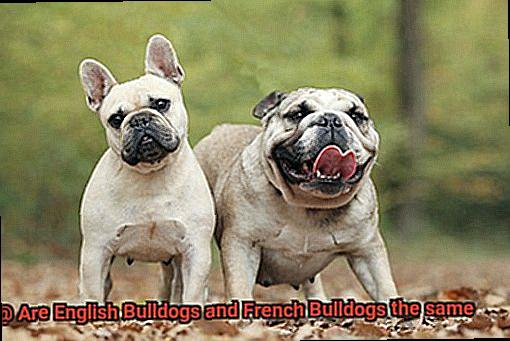
Obesity:
- Bulldogs love food and can easily become overweight or obese.
- Obesity can lead to heart disease, diabetes, and joint issues.
- A healthy diet and regular exercise are crucial in maintaining a healthy weight.
Genetic Disorders:
- Both breeds are predisposed to certain genetic disorders such as congenital heart defects, spinal abnormalities, or neurological issues.
- Responsible breeding practices and regular health screenings can help minimize the prevalence of these conditions.
Popularity of English and French Bulldogs
Let’s talk about the rising stars of the canine world – English and French Bulldogs. These adorable breeds have been stealing hearts left and right, becoming the “it” dogs of the moment. But what exactly makes them so popular? Well, grab a cup of coffee and join me as we dive into the factors that have contributed to the skyrocketing popularity of these squish-faced darlings.
Historical Associations:
English Bulldogs have a rich history that dates back to their bull-baiting days. However, over time, they evolved into cherished companions and symbols of British culture. The French Bulldog, on the other hand, owes its popularity to lace workers who migrated from England to France in the late 19th century. Bringing their small bulldogs along, these workers inadvertently laid the foundation for the breed’s flourishing presence in France.
Unique Appearance:
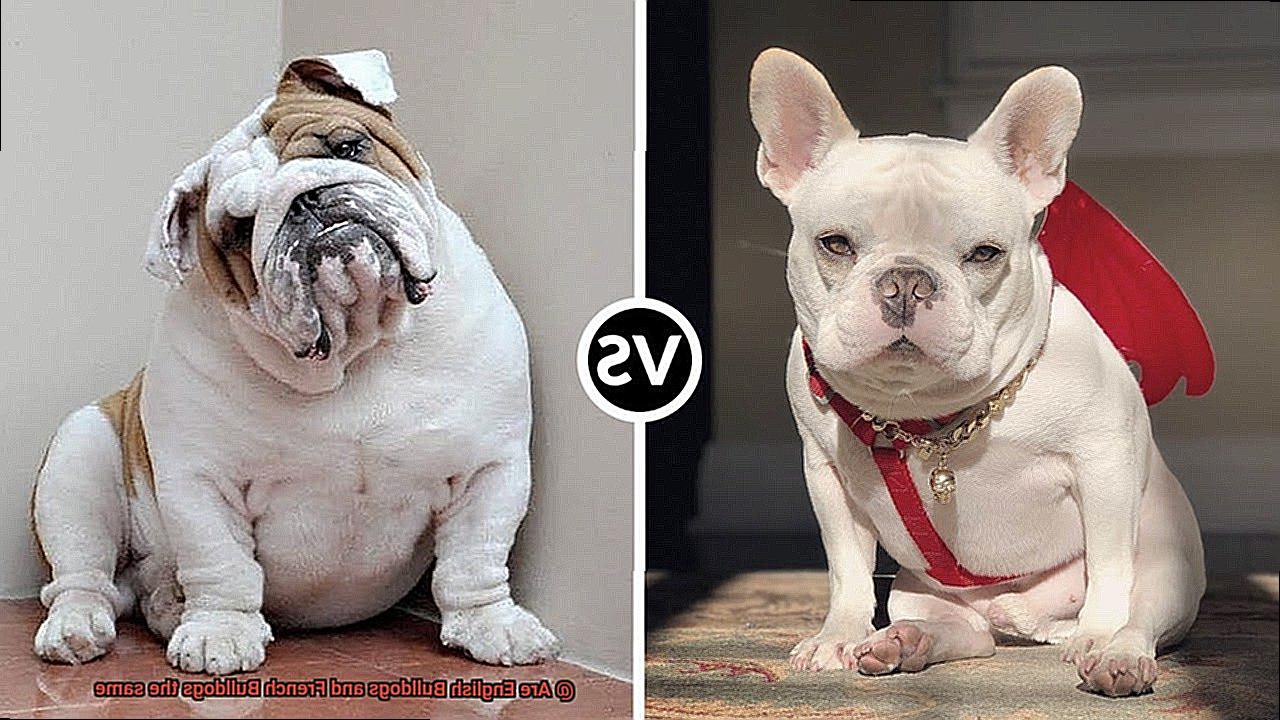
Let’s face it – those wrinkled faces, stocky builds, and bat-like ears are hard to resist. English Bulldogs boast a muscular physique and larger heads, while French Bulldogs captivate with their smaller, more compact frames. Their distinct appearances make them stand out in a crowd and have undoubtedly contributed to their popularity as Instagram-worthy pets.
Charming Personalities:
Beyond their cute exterior lies a heartwarming personality that has won over countless dog lovers. English Bulldogs are often described as lovable and gentle giants, while French Bulldogs are known for their playful and affectionate nature. Their friendly dispositions make them perfect companions for families, singles, and even celebrities seeking a loyal sidekick.
Celebrity Endorsements:
Speaking of celebrities, it seems like every influencer and A-lister has fallen head over heels for these endearing breeds. From Lady Gaga to Hugh Jackman, famous faces proudly flaunt their English and French Bulldogs, setting trends and fueling the breed’s popularity. After all, who can resist the charm of a bulldog snuggling up to their favorite celeb?
Social Media Influence:
In the age of social media, cute and photogenic pets reign supreme, and English and French Bulldogs are no exception. These breeds have become internet sensations, with dedicated accounts boasting millions of followers. The power of viral videos and adorable snapshots has undoubtedly played a role in the surge of popularity for these lovable pups.
Price Considerations for Buying an English or French Bulldog
Price Considerations for Buying an English or French Bulldog
So, you’ve fallen in love with the wrinkly face and playful nature of Bulldogs, but now you’re wondering about the price tag that comes along with these popular breeds. Well, fear not. I’m here to break down the different price considerations for buying an English or French Bulldog, so you can make an informed decision.
Breed Demand and Availability:
English Bulldogs are often considered a luxury breed, known for their distinct appearance and charming personalities. Due to their high demand and limited availability, English Bulldogs tend to come with a higher price tag. You can expect to pay anywhere from $1,500 to $4,000 for an English Bulldog, depending on factors such as the breeder’s reputation and the dog’s pedigree.
French Bulldogs, on the other hand, are smaller in size and have a more compact build. While they are still considered a pricey breed, they tend to be more affordable than their English counterparts. The average price for a French Bulldog ranges from $1,500 to $3,000.
Breeding Complications:
One of the main factors that contribute to the cost difference between English Bulldogs and French Bulldogs is the breeding process. English Bulldogs often require artificial insemination and caesarean sections due to their large head size and narrow hips. These additional procedures increase the cost for breeders, which in turn affects the price for buyers. French Bulldogs, on the other hand, have fewer breeding complications, which helps keep their prices relatively lower.
Pedigree and Show Potential:
Another factor that affects the price of both English and French Bulldogs is the dog’s pedigree. Dogs with champion bloodlines or show potential are usually more expensive than those without such credentials. Breeders invest a lot of time and resources in breeding dogs with desirable traits and characteristics, which adds value to their offspring.
Additional Costs:
When considering the price of a Bulldog, it is important to factor in additional costs. Both English and French Bulldogs are prone to certain health issues, such as respiratory problems and joint conditions. Potential owners should be prepared for potential veterinary expenses that may arise. Additionally, both breeds may require special diets or grooming needs, which should be taken into account when calculating the overall cost of ownership.
Choosing a Reputable Breeder:
Lastly, it is crucial to find a reputable breeder when buying an English or French Bulldog. Responsible breeders invest in the health and well-being of their dogs, conducting health screenings and providing proper care for the puppies. Buying from a reputable breeder ensures that you are getting a healthy and well-socialized puppy, which can save you money on future veterinary bills.
History and Origin of the English Bulldog Breed
Have you ever wondered where your beloved English Bulldog came from? Well, let’s take a journey back in time to uncover the fascinating history and origin of this unique breed.
Medieval England: The Bulldog’s Beginnings
In the 13th century, the English Bulldog breed originated in England. Back then, they were primarily bred for bull-baiting, a popular sport during medieval times. These early bulldogs were larger and more aggressive, with a stronger build and a ferocious temperament.
Evolution of the Breed
As the sport of bull-baiting started to decline in popularity, breeders began selectively breeding the English Bulldog to become smaller and more docile. The ban on bull-baiting in the 19th century further influenced the breed’s evolution. These changes resulted in the English Bulldog we know today – a loyal and gentle companion.
Distinctive Physical Characteristics
One of the most recognizable features of the English Bulldog is its distinctive physical appearance. Over generations, breeders selectively bred for traits such as a wrinkled face, pushed-in nose, and underbite. These characteristics give the breed its unique charm and appeal.
Versatile Working Dogs
While initially used for bull-baiting, English Bulldogs also served other purposes. They were employed as livestock guardians and worked alongside butchers to control unruly cattle. Their strong and determined nature made them well-suited for these tasks.
Rise in Popularity as Companion Dogs
In the late 19th century, the English Bulldog gained popularity as a companion dog rather than a working or sporting breed. Their lovable personalities and distinctive appearance captured the hearts of dog enthusiasts worldwide. This popularity spread beyond England, especially to the United States.
Recognition as a Global Icon
Today, the English Bulldog is one of the most recognized dog breeds worldwide. Their endearing charm and unwavering loyalty have made them beloved pets in countless households. Whether you’re strolling through the streets of London or walking down the busy avenues of New York City, it’s hard to miss these adorable and iconic dogs.
So, the next time you look into the soulful eyes of your English Bulldog, remember their rich history and how they have evolved from fierce bull-baiters to loyal companions. It’s truly remarkable to see how this breed has stood the test of time and become a global symbol of love and devotion.
Conclusion
In conclusion, it is clear that English Bulldogs and French Bulldogs are not the same. While they may share some similarities in appearance, such as their stocky build and wrinkled faces, there are distinct differences between the two breeds.
English Bulldogs have a more muscular and robust physique compared to French Bulldogs, who are smaller and more compact. The English Bulldog’s head is larger with a pronounced jawline, while the French Bulldog has a comparatively smaller head with a flatter face.
Furthermore, their temperaments differ as well. English Bulldogs are known for being calm and gentle, whereas French Bulldogs tend to be more energetic and playful. This contrast in personality can greatly impact the type of owner each breed would best suit.
Another significant difference lies in their history and origins. English Bulldogs were originally bred for bull-baiting and have a long history dating back to ancient times. On the other hand, French Bulldogs were developed as companion dogs during the 19th century by crossing English Bulldogs with local French breeds.
In terms of health concerns, both breeds have their own set of issues. English Bulldogs are prone to respiratory problems due to their short snouts, while French Bulldogs can experience spinal disorders because of their unique body structure.
In conclusion, while they may share some physical characteristics and belong to the same family of bulldogs, English Bulldogs and French Bulldogs are distinct breeds with different traits, temperaments, histories, and health concerns.

